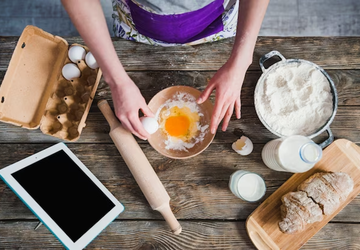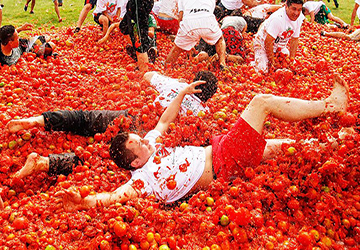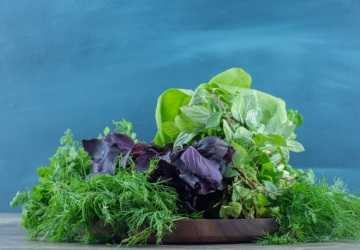Introduction: The Art of Bread Baking
Bread baking is an esteemed craft that masterfully blends science and artistry, turning simple ingredients like flour, water, yeast, and salt into fragrant, satisfying loaves. This age-old pleasure is accessible to all, from kitchen novices embarking on their first baking journey to seasoned bakers seeking to refine their skills. This article serves as your thorough ultimate bread baking guide, brimming with essential home baking bread tips and detailed instructions on how to bake perfect bread. So, let's commence this rewarding journey together, transforming humble grains into golden treasures of artisanal bread.
The Foundation: Understanding Your Ingredients

baking bread at home transcends the mere act of cooking—it's a ritual that taps into something primal and deeply satisfying. As you combine simple ingredients and watch them transform through the alchemy of baking, you're not just making food; you're creating something that feeds both body and soul. Armed with these home baking bread tips, a comprehensive understanding of how to bake perfect bread, and your ultimate bread baking guide, you stand ready at the precipice of a delightful foray into the world of breadmaking.
The Basics of Bread
At its core, bread is humble, composed of just four basic ingredients. Yet, each component plays a pivotal role. Flour provides structure, water activates the yeast, yeast ferments the dough, and salt regulates yeast activity and adds flavor. The choice of flour—be it all-purpose, bread, or whole wheat—will determine the bread's texture and crust. Temperature influences the yeast; too hot, and it will kill the yeast, too cold, and it won't activate. Salt not only flavors the bread but also tightens the gluten structure and regulates yeast growth.
Quality Matters
The axiom "better ingredients, better bread" holds true. High-quality, unbleached flour has not been stripped of its natural flavor and nutrients, fresh yeast is more reliable than its older counterparts, and good-tasting water, free from impurities, can make a marked difference. Organic or locally milled flours can also impart unique tastes to your bread.
Kneading and Fermentation: Developing Flavor and Texture
The Art of Kneading
Kneading is a crucial step in bread making, developing the gluten that gives bread its structure and chew. The process can be meditative and rewarding as you feel the dough transform under your hands. When done correctly, it results in a smooth, elastic dough that springs back when poked.
Patience in Proofing
Proofing, or the fermentation process, is where the dough develops its flavor and gases that will expand during baking. This slow, ambient process is affected by temperature and time and can't be rushed. A properly proofed dough should be soft, slightly puffy, and should retain an indentation when gently pressed with a finger.
Shaping and Scoring: Preparing for the Oven
Shaping Loaves
Shaping is not just about aesthetics; it's about structure. A well-shaped loaf will rise uniformly and produce an even crumb. Techniques vary from a simple round boule to a traditional batard, to a sandwich loaf. Each shape has its method, but all require a gentle touch to not deflate the dough.
The Importance of Scoring
Scoring isn't merely decorative; it's functional. It guides the bread's expansion in the oven, known as oven spring. A lame or sharp knife can be used to make swift, decisive cuts, allowing the bread to bloom beautifully as it bakes.
Baking and Cooling: The Final Steps

The Perfect Bake
The bake is where the magic happens. It's crucial to preheat the oven to create a hot environment for the bread to rise quickly. Using steam in the first minutes of baking can help achieve a crispy crust by keeping the surface of the dough moist, allowing for maximum expansion before the crust sets.
Cooling Your Loaf
Once baked, the bread needs to cool to allow the crumb to set. Cutting into a loaf too soon can result in a gummy texture. A wire rack is perfect for cooling as it allows air to circulate around the bread, preventing moisture from making the crust soggy.
Advanced Tips and Troubleshooting
When Things Don't Go As Planned
Bread baking can sometimes be unpredictable, but most issues have a solution. If the bread is too dense, it may need more kneading or a longer proof. If the crust is too thick, the baking temperature may be too low, or there's too much steam. Through trial and error, you'll learn to adjust your technique to achieve the desired outcome.
Conclusion: The Reward of Baking Bread
This journey is about more than following recipes—it's about engaging with each sense. The silky touch of flour, the rhythmic motion of kneading, the visual growth during proofing, the aromatic symphony in the oven, and finally, the crackling sound as you break open a crusty loaf—all contribute to the bread's allure. It's this sensory engagement that makes bread baking not just a task, but an art and a science.
With every batch, you hone your intuition for the craft. You learn to read the dough's texture, to feel when it's been kneaded to perfection, to smell when it's baked just right. And when challenges arise, as they invariably do in any worthwhile endeavor, these home baking bread tips will be your compass. Whether it's a loaf that didn't rise as expected or a crust that's too thick or thin, each loaf is a lesson that builds your baking repertoire.
Embrace the creativity that breadmaking invites. Experiment with flours, play with hydration levels, and infuse your loaves with ingredients that reflect your personal taste. This is your ultimate bread baking guide—a tool to guide you, but it's your hands and heart that will bring the bread to life. Each loaf, unique and personal, is a testament to your dedication and passion for the craft. As you continue on this bread baking journey, let the dough be your canvas and the oven your gallery, where the masterpieces of your labor come to warm, fragrant fruition.





